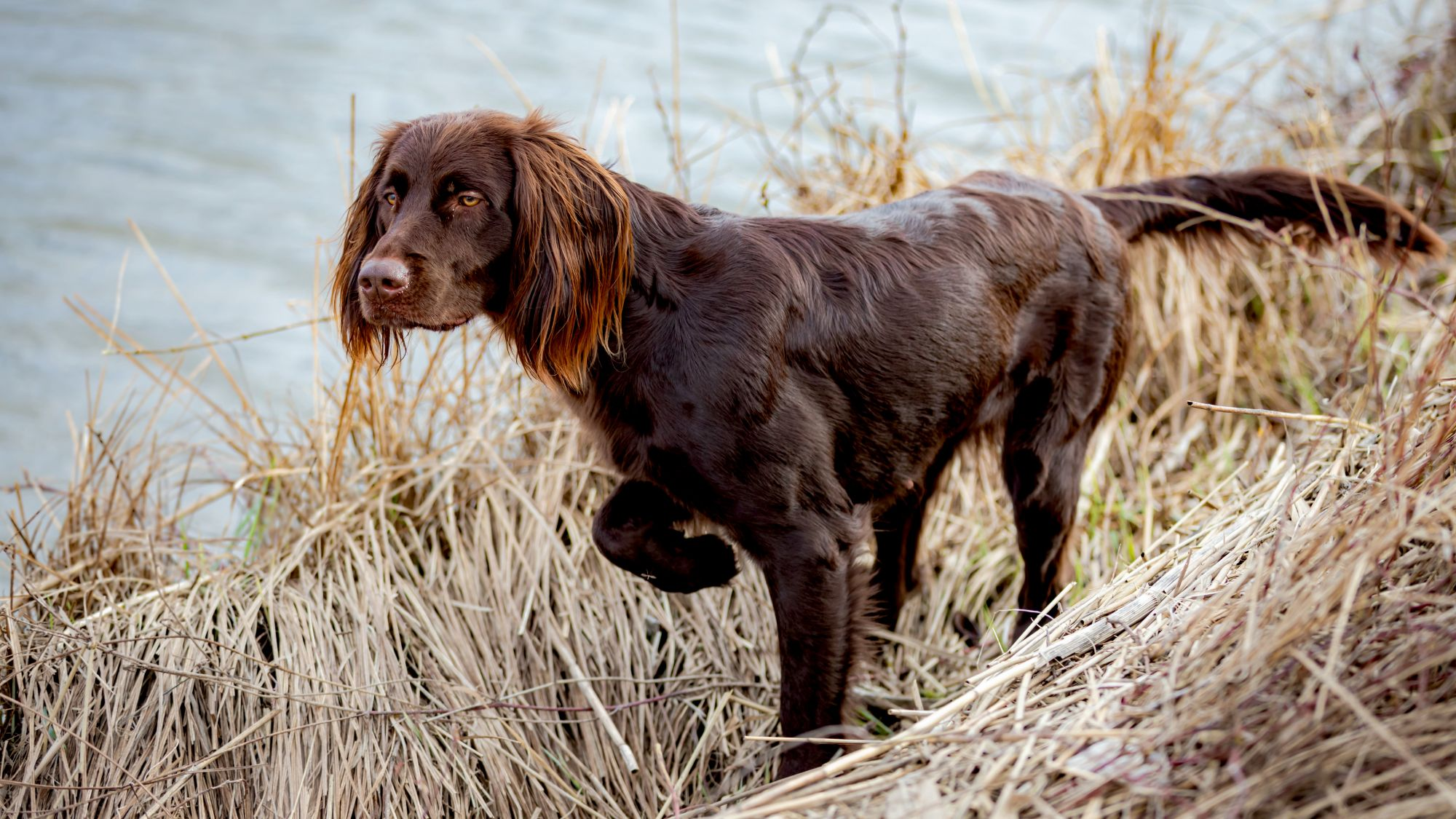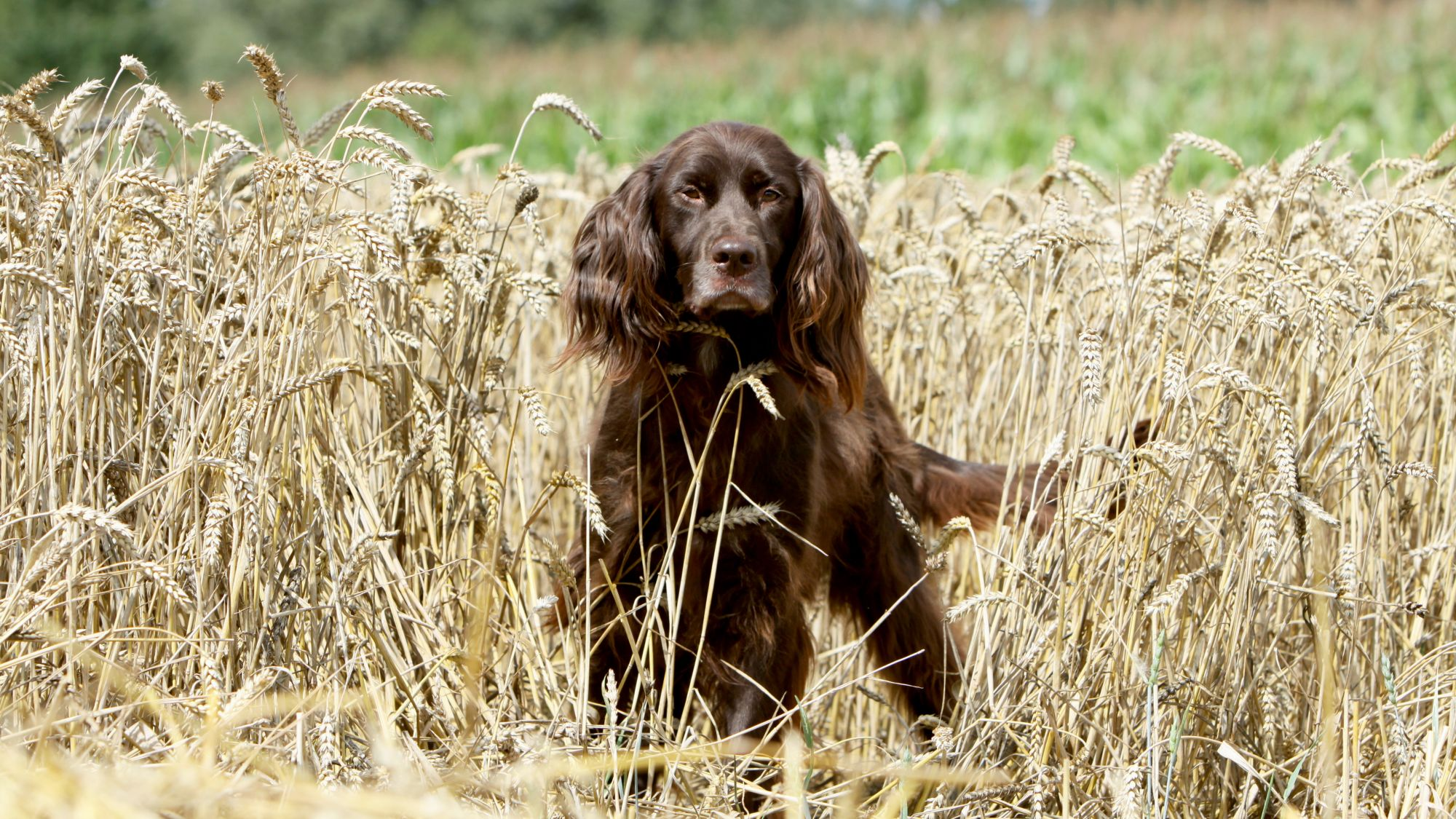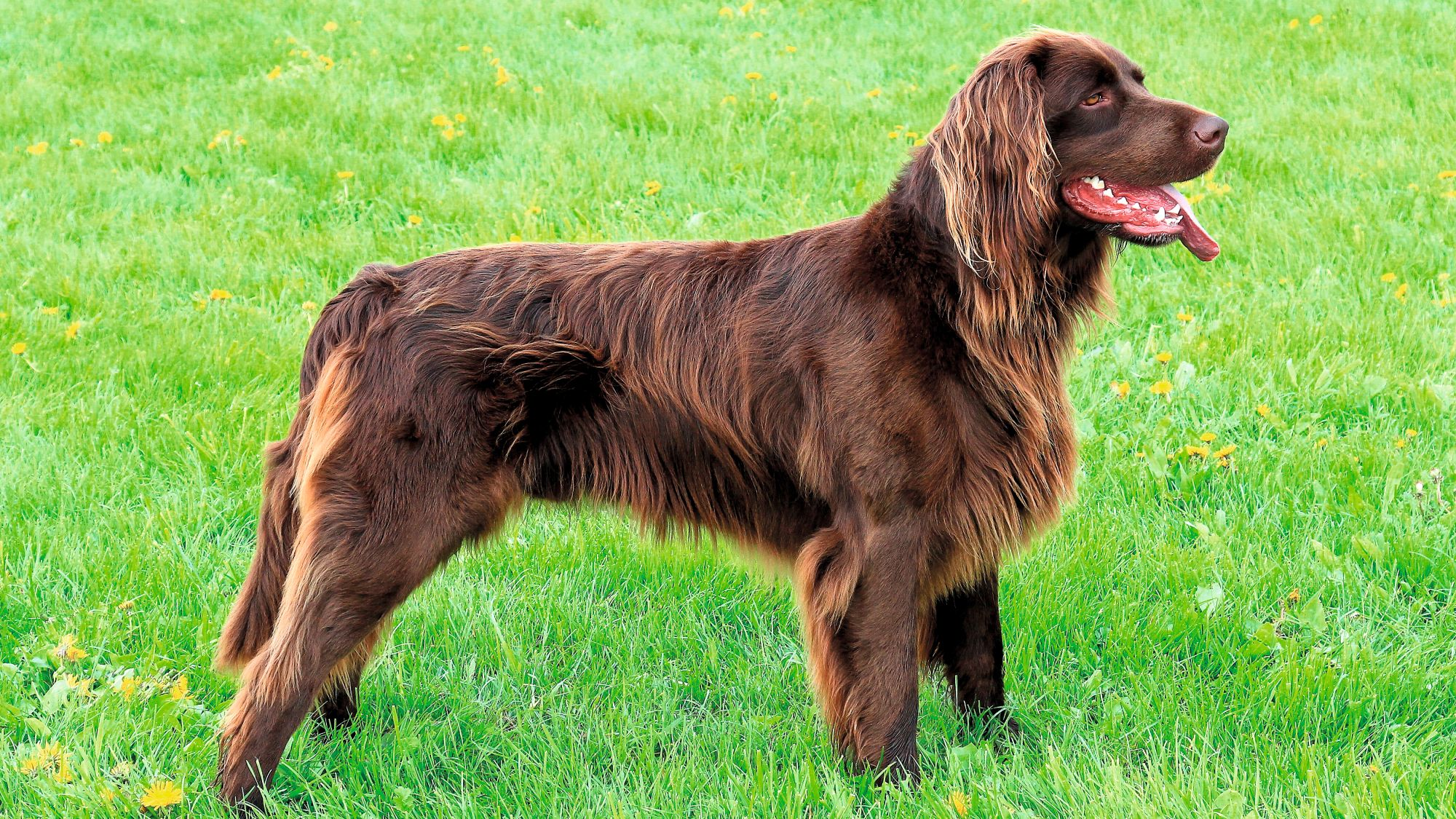
Let's talk German Longhaired Pointers
If you’re looking for a canine blend of calm and energy – with a large helping of beauty thrown into the mix – then the German Longhaired Pointer might be the dog for you. This even-tempered and eager-to-please breed was developed for hunting in 19th century Germany when the dogs were prized for their versatility – tracking, pointing, retrieving, swimming – but these days, they also make gentle and affectionate companions for their human families—as long as you ensure they get enough exercise.
Official name: German Longhaired Pointer
Other names: German Longhaired Pointing Dog, Deutsch Langhaar
Origins: Germany

| Drooling tendencies: |
|
Warm weather? | 
|
| Shedding level: | Suited to apartment living? | 
|
|
| Energy level (high, low, moderate) *: | Moderate | Family pet? * |

|
| Compatibility with other pets: |  |
Can stay alone? * | 
|
* We advise against leaving pets alone for long stretches. Companionship can prevent emotional distress and destructive behaviour. Speak to your veterinarian for recommendations.
Every pet is different, even within a breed; this snapshot of this breed’s specifics should be taken as an indication.
For a happy, healthy and well-behaved pet, we recommend educating and socialising your pet as well as covering their basic welfare, social and behavioural needs.
Pets should never be left unsupervised with a child.
All domestic pets are sociable and prefer company. However, they can be taught to cope with solitude from an early age. Seek the advice of your veterinarian or trainer to help you do this.


| Baby age: | Birth to 2 months |
| Puppy age: | 2 to 15 months |
| Adult age: | 15 months to 5 years |
| Mature age: | 5 to 8 years |
| Senior age: | From 8 years |

1/7
Get to know the German Longhaired Pointer
All you need to know about the breedSwimming, tracking, pointing, running … more running: This dog can do it all—and with a (metaphorical) smile on their face. The versatile, active and amenable German Longhaired Pointer breed was developed as a companion to hunters suited to any terrain. Now these athletic and intelligent dogs make a great companion for any sufficiently outdoorsy humans.
As long as they get enough exercise to burn off some of their natural energy, these charming dogs, with their glossy wavy coats in shades of chestnut brown and white, are also calm and content with their humans at home. The German Longhaired Pointer breed thrives on having a safe outdoor space to explore, putting that impressive nose to good use, and stretching their powerful legs. That space does need to be securely enclosed because their prey drives are still very much intact. For the same reason, they’re not really recommended for households containing guinea pigs, hamsters or other small pets. Once trained, German Longhaired Pointers should get on fine with other dogs and do well with children, although like any other breed they shouldn’t be left unsupervised with the latter.

2/7
2 facts about German Longhaired Pointers
1. Best paw forward
As the name suggests, the German Longhaired Pointer is a pointing breed—these helpful dogs were developed over the years to stand stock still when they picked up an interesting scent, with a front paw raised “pointing” to draw their human’s attention, a graceful habit the breed has maintained to this day.
2. Brown is the new black
The German Longhaired Pointer comes in shades of brown and white, and is one of the few major gundog breeds for which black is not an acceptable colour in the breed standard. Good news really, as it would be a shame to miss out on those rich chestnutty, mahogany hues.
History of the breed
The German Longhaired Pointer breed was developed in Germany, in the 19th century, when bird and water dogs were crossed with scent hounds. The objective was to develop a versatile can-do dog that would be a helpful companion to hunters, with the right coat, stamina and temperament for working in field, forest or water. That aim was certainly achieved.
Two closely related breeds, the German Shorthaired Pointer and the German Wirehaired Pointer also came into being at around the same time. Baron von Schorlemer wrote the first standard for the German Longhaired Pointer in 1897. The breed was finally recognised by the United Kennel Club (UKC) in 2006 and the Fédération Cynologique Internationale (FCI) in 2011.

4/7
From head to tail
Physical characteristics of German Longhaired Pointers
1. Head
Rounded head, large low-set ears with thick, wavy feathering.
2. Body
Strong, muscular body.
3. Coat
Rich brown coat, often with white markings or speckling.

5/7
Things to look out for
From specific breed traits to a general health overview, here are some interesting facts about your German Longhaired Pointer

6/7
Caring for your German Longhaired Pointer
Grooming, training and exercise tips
German Longhaired Pointers’ thick protective coats don’t require too much grooming—a weekly brush should be enough to keep them in good condition. Do check their coats for dirt and debris after walks in long undergrowth. Teeth should be cleaned regularly and nails clipped too. Those trademark ears need to be checked frequently for any signs of dirt or wax build-up to avoid the risk of ear infections (watch out for redness or hotness and if in doubt, check with your vet).
For German Longhaired Pointers to be calm at home depends on them getting the chance to let off some steam—they do need regular exercise, and plenty of it. If you let them off the lead, it must be in a safely enclosed space, or they may pick up a scent and just run and run.
German Longhaired Pointers are intelligent and eager to please so should be no problem to train, as long as you start early and stay firm but kind. Take any treats used as rewards out of daily rations to help keep your dog trim.
7/7
All about German Longhaired Pointers
Yes! If you’ve set your heart on one of these lovely dogs (and frankly, why wouldn’t you?) then you might find it takes time to track one down. It will definitely be worth it though. Make sure that if you’re buying from a breeder, you do your research and find a responsible one.
The German Longhaired Pointer breed is known for being amenable to training. Just start early and be patient and consistent. And of course, any food rewards should come out of their daily rations to avoid them becoming overweight.
Read more on this topic


How to adopt a dog

Things to consider before getting a dog
Sources
1 - Veterinary Centers of America https://vcahospitals.com/
2 - Royal Canin Dog Encyclopaedia. Ed 2010 and 2020
3 - Banfield Pet Hospital https://www.banfield.com/
4 - Royal Canin BHN Product Book
5 - American Kennel Club https://www.akc.org/